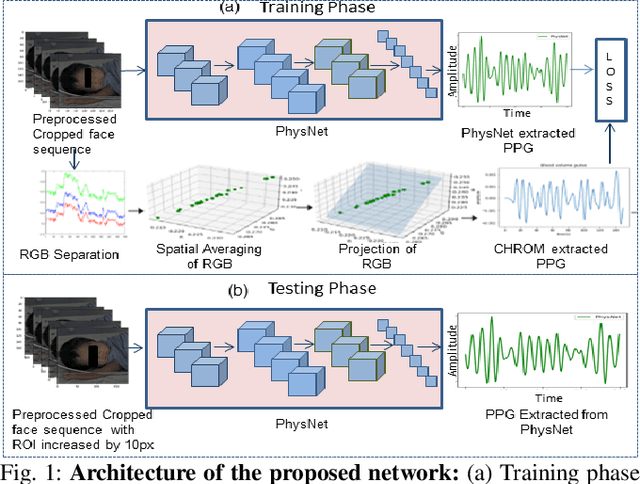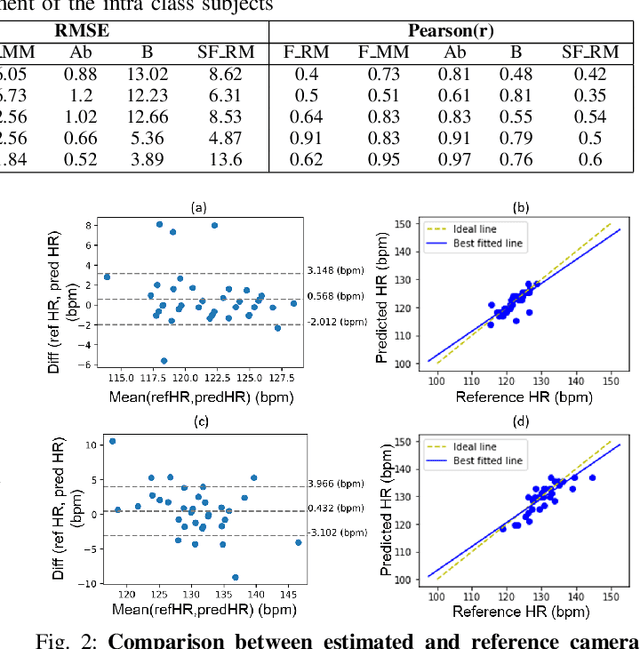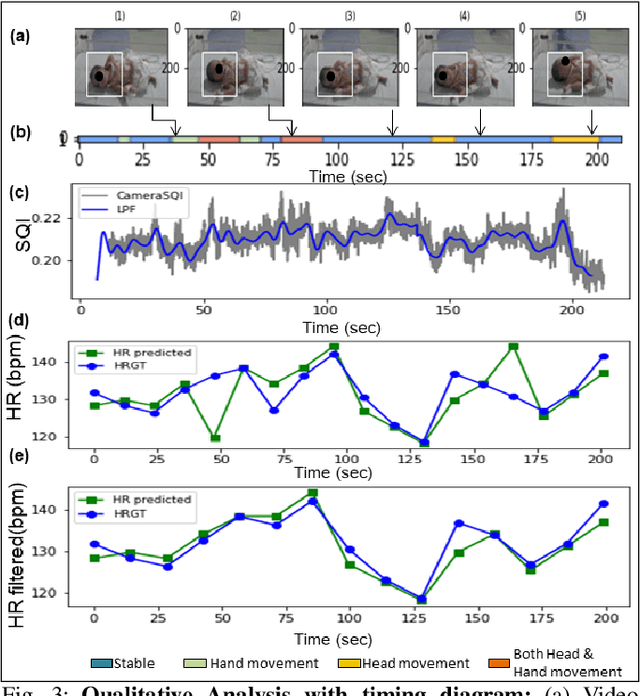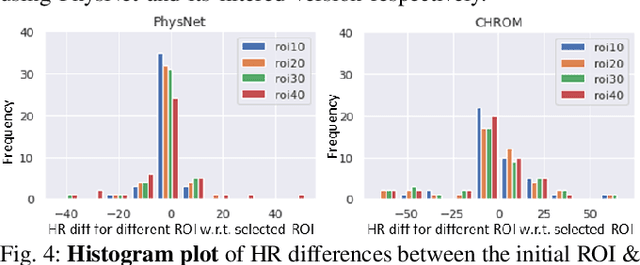Steffen Leonhardt
The Face of Affective Disorders
Aug 04, 2022



Abstract:We study the statistical properties of facial behaviour altered by the regulation of brain arousal in the clinical domain of psychiatry. The underlying mechanism is linked to the empirical interpretation of the vigilance continuum as behavioral surrogate measurement for certain states of mind. We name the presented measurement in the sense of the classical scalp based obtrusive sensors Opto Electronic Encephalography (OEG) which relies solely on modern camera based real-time signal processing and computer vision. Based upon a stochastic representation as coherence of the face dynamics, reflecting the hemifacial asymmetry in emotion expressions, we demonstrate an almost flawless distinction between patients and healthy controls as well as between the mental disorders depression and schizophrenia and the symptom severity. In contrast to the standard diagnostic process, which is time-consuming, subjective and does not incorporate neurobiological data such as real-time face dynamics, the objective stochastic modeling of the affective responsiveness only requires a few minutes of video-based facial recordings. We also highlight the potential of the methodology as a causal inference model in transdiagnostic analysis to predict the outcome of pharmacological treatment. All results are obtained on a clinical longitudinal data collection with an amount of 100 patients and 50 controls.
Deep learning based non-contact physiological monitoring in Neonatal Intensive Care Unit
Jul 25, 2022



Abstract:Preterm babies in the Neonatal Intensive Care Unit (NICU) have to undergo continuous monitoring of their cardiac health. Conventional monitoring approaches are contact-based, making the neonates prone to various nosocomial infections. Video-based monitoring approaches have opened up potential avenues for contactless measurement. This work presents a pipeline for remote estimation of cardiopulmonary signals from videos in NICU setup. We have proposed an end-to-end deep learning (DL) model that integrates a non-learning based approach to generate surrogate ground truth (SGT) labels for supervision, thus refraining from direct dependency on true ground truth labels. We have performed an extended qualitative and quantitative analysis to examine the efficacy of our proposed DL-based pipeline and achieved an overall average mean absolute error of 4.6 beats per minute (bpm) and root mean square error of 6.2 bpm in the estimated heart rate.
On the Vector Space in Photoplethysmography Imaging
Jun 11, 2019



Abstract:We study the vector space of visible wavelength intensities from face videos widely used as input features in Photoplethysmography Imaging (PPGI). Based upon theoretical principles of Group invariance in the Euclidean space we derive a change of the topology where the corresponding distance between successive measurements is defined as geodesic on a Riemannian manifold. This lower dimensional embedding of the sensor signal unifies the invariance properties with respect to translation of the features as discussed by several former approaches. The resulting operator acts implicit on the feature space without requiring any kind of prior knowledge and does not need parameter tuning. The resulting feature's time varying quasi-periodic shaping naturally occurs in form of the canonical state space representation according to the known Diffusion process of blood volume changes. The computational complexity is low and the implementation becomes fairly simple. During experiments the operator achieved robust and competitive estimation performance of heart rate from face videos on two public databases.
 Add to Chrome
Add to Chrome Add to Firefox
Add to Firefox Add to Edge
Add to Edge